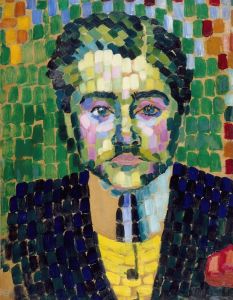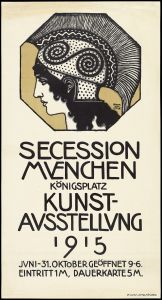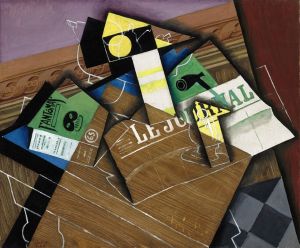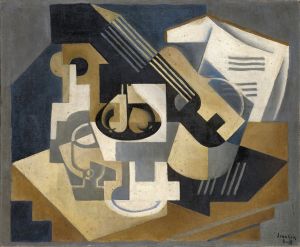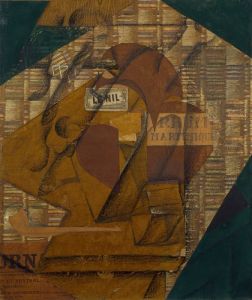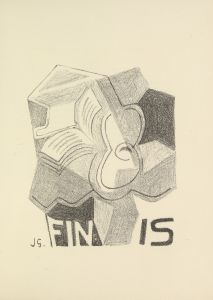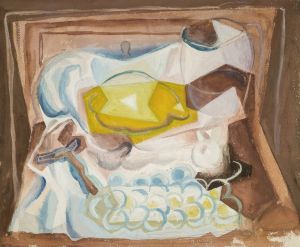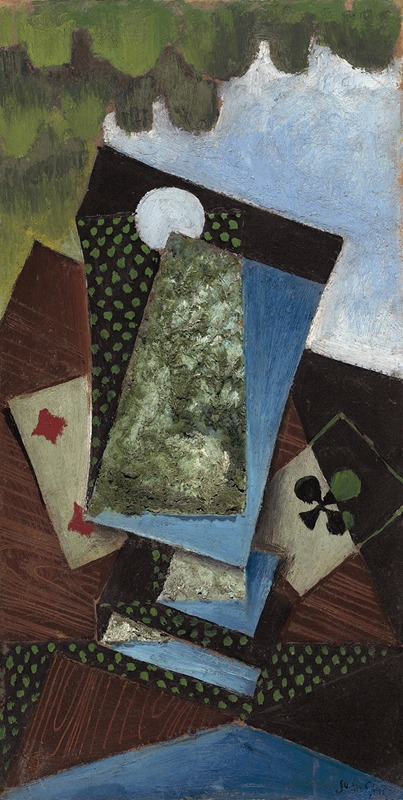
Ace of Clubs and Four of Diamonds
A hand-painted replica of Juan Gris’s masterpiece Ace of Clubs and Four of Diamonds, meticulously crafted by professional artists to capture the true essence of the original. Each piece is created with museum-quality canvas and rare mineral pigments, carefully painted by experienced artists with delicate brushstrokes and rich, layered colors to perfectly recreate the texture of the original artwork. Unlike machine-printed reproductions, this hand-painted version brings the painting to life, infused with the artist’s emotions and skill in every stroke. Whether for personal collection or home decoration, it instantly elevates the artistic atmosphere of any space.
"Ace of Clubs and Four of Diamonds" is a painting by the Spanish artist Juan Gris, created in 1913. Gris, born José Victoriano González-Pérez in Madrid in 1887, was a prominent figure in the Cubist movement, which was characterized by fragmented and abstracted forms. He moved to Paris in 1906, where he became associated with leading avant-garde artists, including Pablo Picasso and Georges Braque, who were pioneers of Cubism.
The painting "Ace of Clubs and Four of Diamonds" exemplifies Gris's mature Cubist style, which often incorporated elements of collage and a meticulous attention to detail. In this work, Gris uses a combination of oil paints and collage techniques to depict playing cards, a common motif in Cubist art. The ace of clubs and the four of diamonds are prominently featured, rendered in a fragmented and abstract manner that challenges the viewer's perception of space and form.
Gris's approach to Cubism was distinct from that of Picasso and Braque. While they often used monochromatic palettes and focused on the deconstruction of objects, Gris employed a more vibrant color scheme and a greater emphasis on clarity and structure. His works are known for their precision and the harmonious arrangement of geometric shapes, which can be seen in "Ace of Clubs and Four of Diamonds."
The painting reflects Gris's interest in everyday objects and his ability to transform them into complex compositions. The use of playing cards in this piece not only demonstrates his skill in rendering familiar items but also suggests themes of chance and strategy, which were relevant to the cultural milieu of early 20th-century Paris. The interplay of shapes and colors creates a dynamic visual experience, inviting viewers to engage with the artwork on multiple levels.
"Ace of Clubs and Four of Diamonds" is part of a broader body of work that solidified Gris's reputation as a master of Cubism. His contributions to the movement were significant, as he brought a unique perspective and a refined technique that influenced subsequent generations of artists. Gris continued to develop his style until his untimely death in 1927 at the age of 40.
Today, "Ace of Clubs and Four of Diamonds" is held in high regard and is part of the collection at the Metropolitan Museum of Art in New York. The painting remains an important example of Gris's artistic legacy and the enduring impact of Cubism on modern art.





